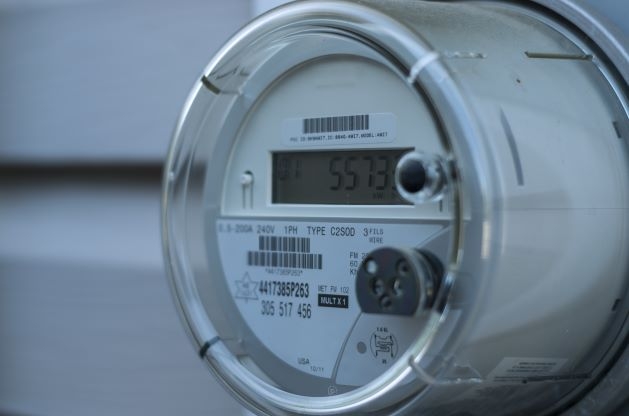With energy use and cost concerns rising, saving natural resources is becoming more important to everyone. Fortunately, there are several ways you can cut down on how much energy you use this winter. Whether you rely on electricity, gas, or both, we’ve got some helpful home energy-saving tips to reduce usage. Also, we’ll show why it’s so important to save energy, the logic behind time changes, and more.
Why Should I Learn Energy Saving Tips?
The main reason is to save money. However, saving energy has benefits beyond taking less out of your wallet. Energy-saving ideas are good for the environment, and they can help teach you more about different aspects of your home. You can also share those home energy-saving tips with others to help them.
Why Should I Save Energy Anyways?
When people save energy, it helps conserve natural resources. Also, it helps reduce water and air pollution. This is because energy is produced by burning oil and coal. Those substances can send lead, sulfur dioxide, and other pollutants into the air. Although power companies try to minimize the pollutants they produce, cutting energy use reduces how much is needed. Since energy saving on a larger level requires work and improvements, it also creates jobs.
What Is Daylight Saving Time?
Everyone enjoys an extra hour of sleep but not losing an hour of it. Although it seems like times changes are only annoyances, the original purpose in the United States was to maximize daylight. DST was developed in 1918 as a way to reduce energy use. It involves moving clocks forward by an hour every spring and backward an hour every fall. The goal was to conserve the country’s energy resources for wartime efforts. With more daylight during waking hours, there was less need for energy consumption. A selling point then was that it added an hour of daylight to the typical workday. It starts the second Sunday of March and ends the first Sunday of November. There have been talks of doing away with DST over the years as many people feel the practice is antiquated and leads to reduced sleep when we “spring forward” and lose an hour.
Energy-Saving Tips
Since DST still exists, it helps to make the most of daylight. For example, if you have efficient windows, you can open the curtains during the day instead of using overhead lights. That’s a pretty common tip. Keep reading to learn other energy-saving ideas you may not know.
1. Keep Your Fridge and Freezer Full
Did you know that cold items in your fridge help maintain the temperature? Without overfilling the unit to the point the contents restrict airflow, keep it fuller if possible. You can even put in water bottles if you wish. With less empty space to cool, a fridge or freezer doesn’t have to use as much energy.
2. Use a Programmable Thermostat
A programmable thermostat can save you up to $150 annually. This type of thermostat automatically controls the temperature at different times. It can adjust automatically while you’re away, while you sleep and when you’re at home. Many units also come with pre-set ideal temperature ranges for energy saving. As long as you follow them, you can save money.
3. Optimize Your Cooking Habits
Don’t open the oven unless your food is done cooking. Unnecessarily peeking at food and leaving the oven open while you grab something both cause energy loss. Whenever you open that door, the temperature drops by about 25 degrees Fahrenheit. The temperature drop makes your oven work harder to heat up again when you close the door. Also, you can reduce energy use by using your microwave instead of the stove whenever possible. For example, it wouldn’t be great to cook a steak in there. However, you can use it to cook packaged foods that can be either microwaved or baked.
4. Upgrade Old Windows or Use Treatments
Inefficient or ill-fitting windows make your home lose a lot of energy. This applies to summer and winter. You lose cool air in the summer and warm air in the winter. If you can’t afford to upgrade windows now, you can also use window treatments to reduce this problem. Thick curtains, blinds, and films are a few examples. You’ve probably also heard about how sealing cracks on doors and windows is important. Be sure to combine that practice with this tip.
5. Use Air to Dry Clothes and Dishes
There’s nothing like a warm blanket just out of the dryer in the winter. However, if you can reduce your dryer use, that can help save energy. Instead of using the heated drying setting, use air drying. Simply running the dryer less can also help. If you don’t have a house full of small kids, you may even be able to hang dry clothes. There are indoor racks you can use for winter. Also, skip the drying feature if you must use a dishwasher.
6. Rotate Ceiling Fan Direction
This is still one of the lesser-known tips to save energy. Most ceiling fans have a small switch that rotates the direction the blades spin. By rotating it to the winter setting, you help distribute warm air and reduce heating needs. How do you know which direction to turn the fan blades in the winter? Check the direction they spin. They should spin clockwise during winter and counterclockwise during summer. Keep the speed on low to use less energy.
7. Wrap Your Water Heater
If you have an older water heater, it’s probably losing heat. This means more energy use. There are jackets or covers you can buy for these units. If you’re a handyperson and wrap it yourself, be sure to avoid covering the vent.
8. Wash Clothes in Cold Water
This is one of the greatest gas or electricity-saving tips for people who wash a lot of clothes. Today, there are laundry detergents designed for cold water. Washing in cold water saves you from having to use the water heater more. This simple practice may also save you about $.03 per load.
9. Use Door Sweeps
You’ve probably heard about the wonders of weather stripping for door frames. A door sweep is another great addition to battle drafts. It fits along the bottom of the door and shouldn’t hinder opening or closing. Some types you can cut to fit your needs. There are under-door, strip, and bristle styles. With less cold air entering from exterior doors, heaters don’t have to work as hard.
10. Skip the Ironing
The last tip for saving energy is a little unconventional but effective. If you shower and have a few garments that need to be ironed every day, this is a helpful power saver. You can take them in the bathroom and hang them as close to the shower as possible. While you shower, the steam should remove the wrinkles within about 10 minutes.
Find All You Need to Save Energy at True Value
Now that you know why saving on energy is important and how to do it, you can get started. Find what you need from these energy-saving ideas at your nearest True Value store!












